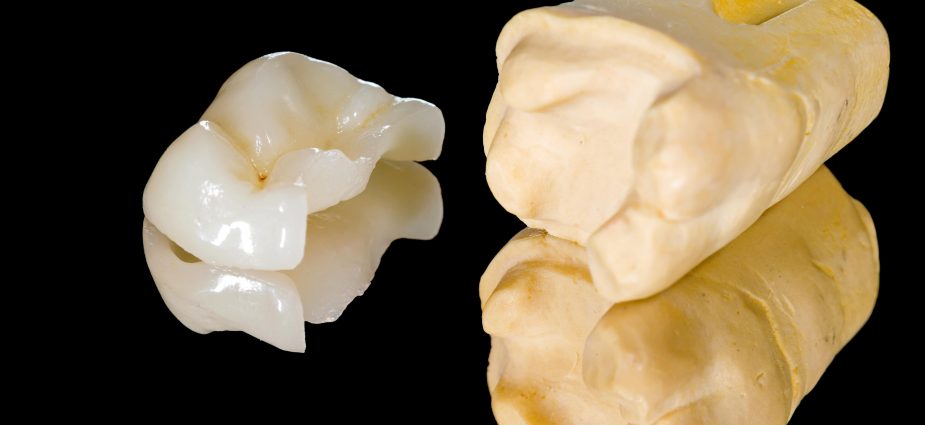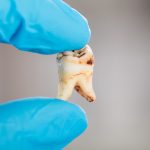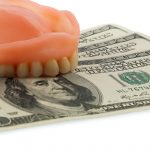Inlays and Onlays: The Indirect Filling Options
Medically Reviewed by: John H. Krell, DDS

Inlays and onlays are dental restorations used by a select number of dentists. In certain cases, they are a more conservative alternative to full coverage dental crowns. Also known as indirect fillings, inlays and onlays offer a well-fitting, stronger, longer lasting reparative solution to tooth decay or similar damage. These restorations are beneficial from both an esthetic and functional point of view.
Inlays and onlays can often be used in place of traditional dental fillings to treat tooth decay or similar structural damage. Whereas dental fillings are molded into place within the mouth during a dental visit, inlays and onlays are fabricated indirectly in a dental lab before being fitted and bonded to the damaged tooth by your dentist.
The restoration is dubbed an “inlay” when the material is bonded within the center of a tooth. Conversely, the restoration is dubbed an “onlay” when the extent of the damage requires inclusion of one or more cusps (points) of the tooth or full coverage of the biting surface.
The Benefits of the Conservative Approach
Superior Fit: They offer a conservative preparation that preserves as much healthy tooth as possible. They are a great choice if you have minimal to moderate tooth decay that extends into a flossing area, offering an excellent alternative to full coverage crowns.
Tooth Color: Boasting esthetic longevity, they are not likely to discolor over time as tooth-colored resin fillings often do.
Tooth Structure Safeguard: They preserve the maximum amount of healthy tooth structure while restoring decayed or damaged areas, helping to ensure functional longevity.
Easy Tooth Cleaning: Because the fit is tailored at all edges and the preparation minimal, your tooth can be easier to clean than it would be with full coverage restorative alternatives such as a dental crown. Composite fillings can shrink during the curing process, whereas prefabricated porcelain or gold inlays/onlays will not (ensuring a precise fit).
Tight Space Fulfillments: If you have a cavity between your teeth, consider an inlay rather than a direct composite filling. They are better at sealing teeth to keep out bacteria; they are easy to clean, will not stain and offer exceptional longevity.
Strength and Stability: They are extremely stable restorative solutions for the treatment of decay. The superior fit and durable material make them a stable choice that can actually strengthen a damaged tooth.
Weak Tooth Protector: An onlay can protect the weak areas of the tooth. The procedure does not require the complete reshaping of the tooth.
The Procedure
Typically, an inlay or onlay procedure is completed in two dental visits.
During your first visit, your dentist must prepare the damaged tooth. A molded impression of the tooth is then taken and sent to a dental laboratory, where the restoration is fabricated.
Inlays and onlays can be made from gold, porcelain or resin materials. The difference is in the appearance of the finished restoration. A fitted, provisional restoration (sometimes known as a temporary or “temp” for short) in the shape of the final restoration can be created during this visit to protect the tooth while the final restoration is being fabricated.
Your dentist might discuss with you the best type of material to use. If esthetics is not a concern (for example, with back molars), gold is the best option. Porcelain offers the best esthetics and are often used in the “smile line” areas. Resin materials may be the best option for people who grind their teeth and/or those with a misaligned bite (malocclusion).
During your second visit, the provisional temporary is removed and your inlay or onlay is placed.
They are extremely stable restorations that seldom fail. Your dentist will check all margins to ensure a smooth fit with tight adjacent contacts. Your dentist will also check your bite to ensure that there are no occlusion-related problems affecting the margins of the restoration. Once fitted, the restoration is bonded onto the tooth and the margins are polished.
What Does the Future Hold?
The materials used to fabricate inlays and onlays continue to evolve and become more natural and tooth-like in terms of structure, how they wear and their longevity. Their use for restorative purposes is not likely to be replaced by another treatment any time soon due to the combination of excellent functional longevity and esthetic naturalness associated with inlays and onlays. In fact, maintaining tooth color over the course of your lifetime may be further enhanced as the materials continue to improve, adding to the esthetic value of the restoration.
Selecting The Right Dentist
There is no formal training offered for porcelain inlays and onlays in dental school and the number of continuing education courses is limited. As a result, there are a relatively small number of dentists who perform this type of procedure. If you want porcelain, it’s important that you make sure your dentist is able to offer that material type.
Some dentists receive training while working closely with their dental laboratory where the technicians are very willing to provide feedback on the best design. Some dentists have technology in their office that allows them to send images of your damaged tooth to a technician so that they can discuss optimal treatment options during your consultation. Dental technicians may also assist with treatment planning for upcoming cases by communicating in real-time with your dentist while you are in the chair.
How Much do They Cost?
The average cost for inlays is $700 to $1,700, and for onlays, between $750 and $1,900, on average. This cost can be impacted by a variety of factors, including:
- The dentist performing the procedure. Some dentists have more experience than others and so their fees may reflect their experience and training.
- Your location – the cost of inlay and onlay services can vary in different locations.
- The tooth or teeth being worked on – back teeth are more difficult to prepare and work on than front teeth.
- The type of material used – gold can be more expensive than other materials (depending on the gold market) and porcelain can be more expensive if fabricated by a highly skilled technician.
- The size of the inlay or onlay – larger onlays cost more than smaller inlays.
Dental insurance companies place inlays and onlays in either the ‘basic’ or ‘major’ service category.
The basic category provides coverage for dental fillings, cleanings and other routine dental services. Your dental insurance may have a pre-set limit for basic services, or a percentage (say 80 percent) of the usual and customary inlay/onlay fees for your area.
If your dental insurance company places them in the major category (like full coverage dental crowns), it could mean that you will be reimbursed at the 50 percent coverage rate.
Typically, a dental office that provides inlay and onlay services will know the reimbursement rates offered by your insurance company because they have had many dealings with local insurance carriers. As always, keep in mind that reimbursement rates vary between carriers and in different areas of the country. You can ask your dental provider to submit for a pre-treatment estimate from your insurance company to get a better idea of your insurance benefit.
About the Reviewer
 John H. Krell, DDS is a top Houston family dentist committed to dental aesthetics, high-quality patient care and compassion. Harnessing state-of-the-art, forward-thinking technologies and a conservative approach to dental care, Dr. Krell strives to provide his patients with the best available treatments focused on prevention in a calming and welcoming practice environment. Hailing from a family of dentists, Dr. Krell works alongside his brother to cater to the dental care needs of patients in and around Houston. Learn More
John H. Krell, DDS is a top Houston family dentist committed to dental aesthetics, high-quality patient care and compassion. Harnessing state-of-the-art, forward-thinking technologies and a conservative approach to dental care, Dr. Krell strives to provide his patients with the best available treatments focused on prevention in a calming and welcoming practice environment. Hailing from a family of dentists, Dr. Krell works alongside his brother to cater to the dental care needs of patients in and around Houston. Learn More






